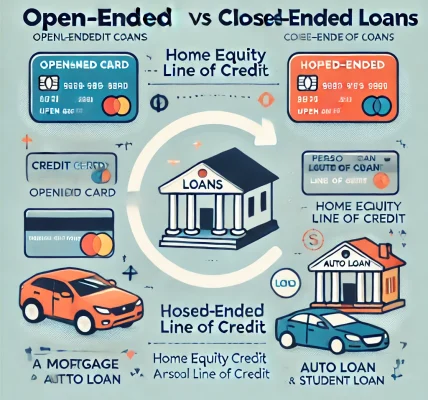Introduction
Loan prepayment and foreclosure are options that borrowers consider to reduce their debt burden and achieve financial freedom sooner. While these strategies can help save on interest payments and improve financial health, they may also come with hidden charges imposed by lenders. Understanding these charges is crucial to making an informed decision. This article explores loan prepayment and foreclosure, the associated fees, their impact on financial planning, and how to minimize costs while repaying a loan early.
Understanding Loan Prepayment and Foreclosure
What is Loan Prepayment?
Loan prepayment refers to paying off a part of your outstanding loan amount before its scheduled tenure ends. Prepayment can be done in two ways:
- Partial Prepayment: Making additional payments toward the loan principal without completely closing the loan.
- Full Prepayment (Foreclosure): Paying off the entire outstanding loan amount before the loan tenure ends.
What is Loan Foreclosure?
Loan foreclosure means completely closing the loan before its due date by repaying the entire remaining amount in one go. This is often done when borrowers receive a financial windfall, such as a bonus, inheritance, or investment returns.
Benefits of Loan Prepayment and Foreclosure
- Interest Savings: Reducing the outstanding principal lowers the total interest payable over the loan’s tenure.
- Debt-Free Sooner: Eliminating a loan earlier provides financial freedom and reduces monthly commitments.
- Improved Credit Score: Successfully closing a loan enhances creditworthiness and boosts the credit score.
- Lower Financial Stress: Reducing debt improves overall financial stability and peace of mind.
Hidden Charges Associated with Loan Prepayment and Foreclosure
While prepaying a loan can be beneficial, it is essential to be aware of the hidden charges that lenders may impose. These charges vary based on the type of loan and lender policies.
1. Prepayment Penalty
Some banks and financial institutions charge a penalty for early loan repayment. This charge is usually a percentage of the outstanding principal amount and varies based on:
- Loan type (home loan, personal loan, car loan, etc.)
- Interest rate type (fixed or floating)
- Lender policies and terms of the loan agreement
Example:
If your lender charges a 3% prepayment penalty on an outstanding loan balance of ₹5,00,000, the penalty would be ₹15,000.
2. Foreclosure Charges
If you decide to foreclose your loan, some lenders impose foreclosure charges. These fees can range from 2% to 5% of the outstanding loan amount. Many financial institutions do not levy foreclosure charges on floating-rate home loans due to regulatory guidelines, but fixed-rate loans often have these charges.
3. Processing Fees for Prepayment
Some banks charge a nominal processing fee to handle prepayment requests. Though small, this fee can add to the overall cost of loan prepayment.
4. Administrative Fees
Lenders may charge administrative fees for processing prepayment requests, including paperwork and loan restructuring.
5. GST on Prepayment Charges
Goods and Services Tax (GST) is applicable to prepayment penalties, foreclosure charges, and processing fees. This can increase the total cost of repaying a loan early.
6. Impact on Tax Benefits
For loans that offer tax benefits (such as home loans), prepayment may reduce tax deductions on principal and interest payments. Borrowers should evaluate the tax implications before prepaying a loan.
How to Avoid or Minimize Prepayment and Foreclosure Charges
1. Check Loan Agreement Terms
Before signing a loan agreement, carefully review the terms related to prepayment and foreclosure. Some lenders offer loans with zero prepayment penalties.
2. Opt for Floating Interest Rate Loans
In many countries, floating-rate home loans do not attract prepayment or foreclosure penalties, as per regulatory guidelines. Choosing a floating-rate loan can help you save on these charges.
3. Negotiate with Lender
If you plan to prepay or foreclose a loan, negotiate with your lender to waive or reduce the penalty fees.
4. Prepay in Small Amounts
Some lenders allow small, periodic prepayments without imposing penalties. Instead of a lump sum prepayment, making multiple smaller payments can help avoid charges.
5. Compare Lenders Before Taking a Loan
Different lenders have varying prepayment policies. Before choosing a loan, compare lenders to find one with minimal or no prepayment charges.
6. Use Surplus Funds Smartly
Instead of full prepayment, consider investing surplus funds in higher-yielding investments while making partial prepayments periodically.
When Should You Consider Loan Prepayment or Foreclosure?
Prepayment is a Good Option If:
- You have surplus funds that are not needed for other essential expenses.
- The prepayment penalty is low or non-existent.
- Your loan interest rate is higher than the potential returns from investments.
- You want to reduce debt and financial liabilities.
Foreclosure is a Good Option If:
- You receive a financial windfall and want to become debt-free.
- The total interest saved is significantly higher than the foreclosure charges.
- You do not have alternative investment options with better returns.
- You want to improve your credit score and financial stability.
Conclusion
Loan prepayment and foreclosure can be effective strategies for reducing debt and achieving financial independence. However, borrowers must be aware of hidden charges such as prepayment penalties, foreclosure charges, processing fees, and their impact on tax benefits. By carefully assessing lender policies, negotiating terms, and making strategic financial decisions, borrowers can minimize costs and maximize savings. Before making any decision, consult with a financial advisor or review the loan agreement to ensure a financially sound approach that aligns with your long-term financial goals.




